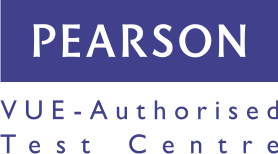Odpowiednikami tego szkolenia są następujące szkolenia:
"Szkolenie MS 55352 Introduction to SQL Databases"; Szkolenie MS 55315 Introduction to SQL Databases; Szkolenie 55356 Introduction to SQL Databases
O tym kursie
Skillable przetworzyło ten popularny kurs z baz danych SQL, wykorzystując nasz nowoczesny model instruktażu oparty na wyzwaniach. Prowadzone na żywo warsztaty praktyczne są głównym elementem tego kursu, umożliwiając uczestnikom uczenie się poprzez działanie i obejmują dodatkowe materiały referencyjne oraz dostęp po zakończeniu zajęć do wyzwań praktycznych Skillable, aby dodatkowo promować i umożliwić ciągłe uczenie się. W tym kursie uczestnicy zweryfikują swoje podstawowe umiejętności związane z bazami danych SQL, w tym modelowanie danych, relacje, agregację oraz obiekty bazy danych.
Profil odbiorcy
Kurs przeznaczony jest dla uczestników poszukujących wprowadzenia do baz danych i technologii baz danych.
Czego się nauczysz?
Moduł 1: Wprowadzenie do Baz Danych
W tym praktycznym module adaptacyjnym uczestnicy będą eksplorować i zapytywać bazę danych Microsoft SQL Server. Najpierw będą zapytywać dane z pojedynczej tabeli w języku Transact-SQL. Następnie będą filtrować dane w języku Transact-SQL, a potem ograniczać wyniki zapytań w języku Transact-SQL.
Lekcje
Lab: Wprowadzenie do Baz Danych
Moduł 2: Modelowanie Danych
W tym praktycznym module adaptacyjnym uczestnicy będą projektować i modelować bazę danych Microsoft SQL Server. Najpierw utworzą bazę danych, a następnie diagram bazy danych do modelowania danych. Następnie utworzą tabele, korzystając z diagramu bazy danych, i ostatecznie utworzą relacje, korzystając z diagramu bazy danych.
Lekcje
Lab: Modelowanie Danych
Moduł 3: Normalizacja
W tym praktycznym module adaptacyjnym uczestnicy będą normalizować bazę danych Microsoft SQL Server. Najpierw zrozumieją korzyści z normalizacji w celu zapewnienia standaryzowanego schematu bazy danych. Następnie znormalizują diagram bazy danych do trzech najbardziej akceptowanych postaci normalnych.
Lekcje
Lab: Normalizacja
Moduł 4: Relacje
W tym praktycznym module adaptacyjnym uczestnicy utworzą diagram bazy danych, aby pokazać relacje w istniejącej bazie danych. Następnie opracują zapytania, które obejmują łączenie wielu tabel za pomocą relacji. Wreszcie opracują bardziej szczegółowe zapytania, które obejmują łączenie wielu tabel za pomocą zewnętrznych łączy.
Lekcje
Lab: Relacje
Moduł 5: Wydajność
W tym praktycznym module adaptacyjnym uczestnicy włączą Magazyn Zapytań, a następnie przeanalizują wydajność zapytań, korzystając z indeksu grupującego. Następnie przeanalizują wydajność zapytań, korzystając z indeksu niestruktureowanego, a potem przeanalizują wydajność zapytań, korzystając z indeksu kryjącego.
Lekcje
Lab: Wydajność
Moduł 6: Agregacja Danych
W tym praktycznym module adaptacyjnym uczestnicy będą eksplorować i agregować dane, korzystając z bazy danych Microsoft SQL Server. Najpierw opracują zapytania, które zwracają dane, korzystając z funkcji agregujących. Następnie opracują zapytania, które podsumowują dane, korzystając z klauzuli GROUP BY, a potem eksplorują zapytania, które filtrować dane, korzystając z klauzuli HAVING.
Lekcje
Lab: Agregacja Danych
Moduł 7: Modyfikacja Danych
W tym praktycznym module adaptacyjnym uczestnicy zmodyfikują dane. Najpierw będą eksplorować i modyfikować bazę danych Microsoft SQL Server, korzystając z Transact-SQL, a następnie wstawiać dane do tabeli. Następnie zaktualizują dane w tabeli, usuną dane z tabeli, a ostatecznie skopiują dane z tabeli źródłowej do nowej tabeli docelowej, korzystając z klauzuli SELECT - INTO.
Lekcje
Lab: Modyfikacja Danych
Moduł 8: Obiekty Bazy Danych
W tym praktycznym module adaptacyjnym uczestnicy utworzą obiekty w bazie danych. Najpierw utworzą obiekty w bazie danych Microsoft SQL Server, korzystając z Transact-SQL. Następnie utworzą tabelę, wybierając odpowiednie typy danych, a także utworzą widok dla bezpieczeństwa. Wreszcie utworzą podstawową procedurę składowaną, a następnie utworzą procedurę składowaną, która wykorzystuje parametr wejściowy.
Lekcje
Lab: Obiekty Bazy Danych
Ponieważ jest to kurs na poziomie wprowadzającym, zaleca się, choć nie jest to wymagane, aby uczestnicy posiadali podstawową znajomość obsługi komputera oraz umiejętności komputerowe.
Firma jest Autoryzowanym Ośrodkiem Szkoleniowym MICROSOFT Silver Learning
Możesz u nas podejść do egzaminu Pearson VUE
Spółka posiada wpis do ewidencji placówek niepublicznych Nr ew. ES.VIII.4320-6/p.n./2003 wydany z upoważnienia Prezydenta Miasta Łodzi
 |
 |
Zachęcamy do skorzystania z możliwości dofinansowania szkoleń oferowanych przez naszą firmę. Dostępne rozwiązania:
Skontaktuj się z nami, aby uzyskać więcej informacji. Oferujemy pełne wsparcie w tym procesie.
Zapraszamy!
|
|
|
Najbliższy termin: Prosimy o kontakt
Najbliższy termin: Prosimy o kontakt
Najbliższy termin: Prosimy o kontakt
Najbliższy termin: Prosimy o kontakt
Najbliższy termin: Prosimy o kontakt
Najbliższy termin: Prosimy o kontakt
Najbliższy termin: Prosimy o kontakt
Najbliższy termin: Prosimy o kontakt
Najbliższy termin: Prosimy o kontakt
Najbliższy termin: Prosimy o kontakt
Najbliższy termin: Prosimy o kontakt
Najbliższy termin: Prosimy o kontakt
